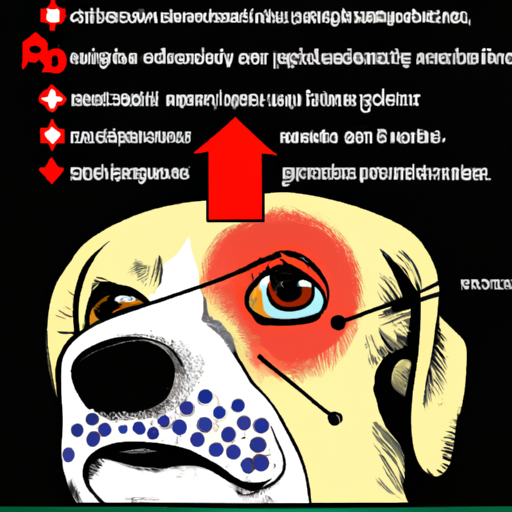As a caregiver, it’s vital that you understand the potential health concerns your furry friend may face. Today, we’ll delve into a common canine issue that often goes unnoticed until it becomes severe – eye ulcers in dogs.
1. Understanding Canine Eye Ulcers
Eye ulcers, known medically as corneal ulcers, are wounds or sores that form on the dog’s cornea – the clear, front part of the eye. It’s a painful condition that can lead to serious complications if left untreated.
In dogs, eye ulcers can be caused by a variety of factors including:
- Trauma or injury
- Infections
- Diseases or disorders
- Certain breeds are more susceptible
2. The Role of Trauma or Injury
Just like us, dogs are prone to accidents. A small piece of debris, a harsh bump, or a scratch from a fellow pet can result in an eye ulcer. It’s important to remember that even the most minor accidents can cause severe health problems, so it’s crucial to keep an eye out for any signs of discomfort.
3. Infections and Their Effects
Infections, particularly bacterial or viral, can also cause eye ulcers. Dogs are naturally curious creatures and their exploration often puts them in contact with harmful bacteria. These infections can cause inflammation and ulcers if left untreated.
4. The Impact of Diseases or Disorders
Certain diseases or disorders can make your dog more susceptible to eye ulcers. Conditions like dry eye, entropion (inward rolling eyelid), or distemper can all lead to ulceration.
| Disease | How it Causes Ulcers |
|---|---|
| Dry Eye | Insufficient tear production leads to dryness and damage |
| Entropion | Eyelids and lashes rub against the cornea, causing injury |
| Distemper | Viral infection that can cause conjunctivitis and keratitis |
5. Breed Susceptibility to Eye Ulcers
Certain breeds are more likely to develop eye ulcers due to their genetic predisposition. Breeds like Boxers, Bulldogs, Pugs, and Shih Tzus often have more prominent eyes, making them more susceptible to trauma and injury.
Frequently Asked Questions
Q1: What are the symptoms of eye ulcers in dogs?
A: Symptoms include redness, tearing, squinting, cloudiness, or apparent pain in the affected eye.
Q2: How are eye ulcers diagnosed in dogs?
A: Vets often use a fluorescent dye test to identify ulcers. The dye sticks to the damaged areas, making them visible under a black light.
Q3: How are eye ulcers treated in dogs?
A: Treatment depends on the cause and severity, ranging from topical antibiotics to surgery in severe cases.
Q4: Can eye ulcers be prevented in dogs?
A: While accidents happen, regular checkups, good hygiene, and careful monitoring can help prevent many cases.
Remember, as your dog’s caregiver, your vigilance and care can make a world of difference. Stay informed, stay aware, and your furry friend will thank you.



